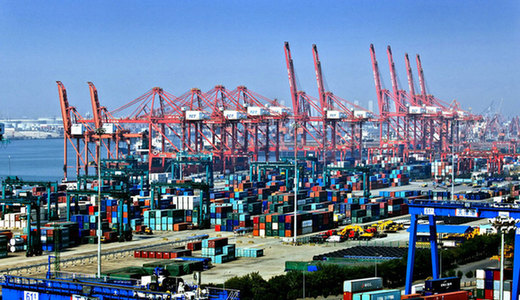How did the Chinese miracle occur? (I)
china.org.cn / chinagate.cn by Shi Zhengfu, February 10, 2014 Adjust font size:
Editor's note: This is the first part of an article by Shi Zhengfu, director of Center for New Political Economy, Fudan University and chairman of Comway Capital Group.
|
|
|
There is reason to say that the socialist market economy with Chinese characteristics has backed China's miracle. |
Some people argue that China's rapid growth is a result of excessive investment and sacrificing consumption, which is true. Over the past three or four decades, consumption has contributed an average of 59 percent to GDP growth, whereas investment has constituted 38 percent.
The proportion of consumption in growth, in comparison with more established market economies, is indeed too low. But one cannot neglect the scale of consumption in China; its people's purchasing power has grown remarkably.
During the same period, China's total spending rose to 23 trillion yuan (US$3.77 trillion) in 2011 from 200 billion yuan (US$32.79 billion) in 1979, representing 9.0 percent annual growth and a 7.9-percent climb on a per capita basis, both in terms of constant prices. The figures have dwarfed most other countries.
Other people think over-investment has resulted in wasting resources. This is partly true. China's investment rate is not only distinctly higher than those of Western countries, but is also much higher than some eastern Asian economies, which have higher saving rates. The high investment rate did not cause a high level of waste, but high growth.
A simple index to measure return on investment efficiency is the capital output ratio, meaning how much investment is needed to produce each yuan of GDP.
According to this calculation, China has performed well. In the first decade since the Reform and Opening Up, the capital output ratio in China was 3.38. That figure increased to 4.10 over the last decade. Horizontally, the U.S. capital output ratio between 1965 and 2010 was 5.29, while during 2005-2009 period, due to the financial crisis, it soared to 22.64.
Historically, China's GDP efficiency has dropped a little. The reason was not overinvestment, but the development of heavy industry and massive urbanization. As this process continues and the tertiary industry expands, China's capital output ratio is expected to remain stable or even slide a bit.
There are even voices that argue that China's demographic dividend contributed to its rapid growth. China's large population did contribute largely to the economy, but one also has to take into account the continuous rise of productivity, mainly from technical innovation.
It is fair to say the miracle in China's rapid development has not relied on pressing consumption, or a result of low efficiency. So, how did China develop so fast?
Shi Zhengfu is director of Center for New Political Economy, Fudan University and chairman of Comway Capital Group.
The article was translated by Chen Boyuan. Its original unabridged version was published in Chinese.


